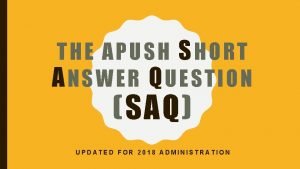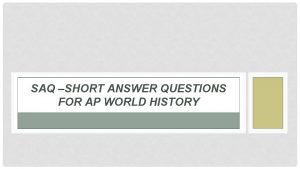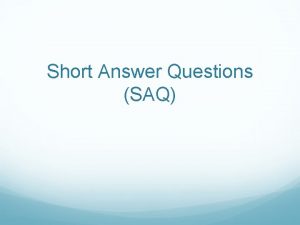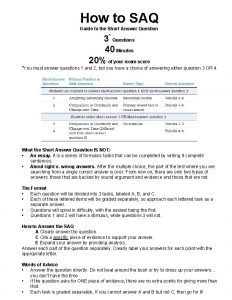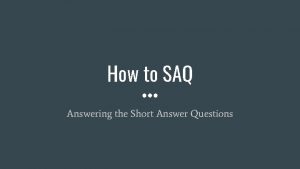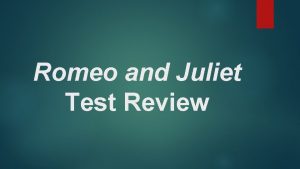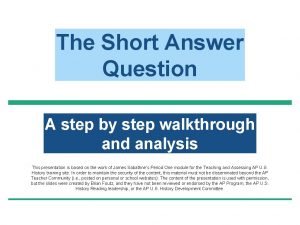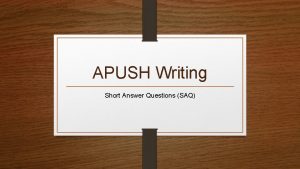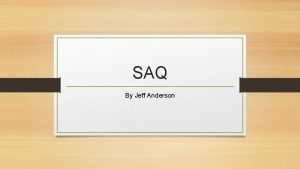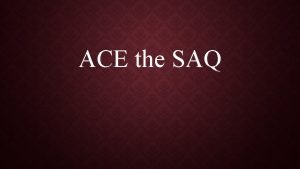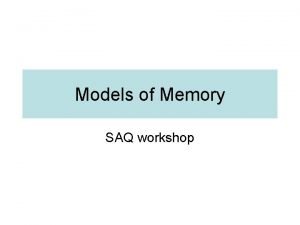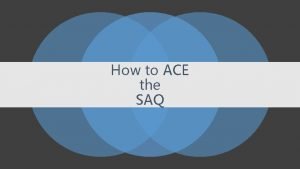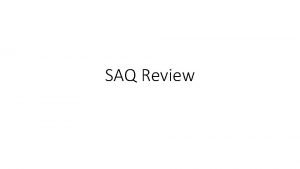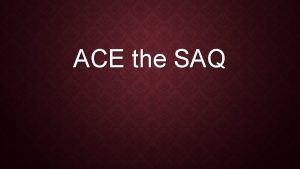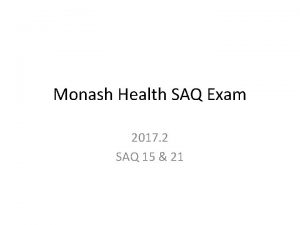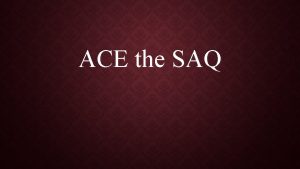Short Answer Questions SAQ Short Answer Questions are










- Slides: 10

Short Answer Questions (SAQ)

Short Answer Questions are testing your: Reading Comprehension! Can you read a passage and answer the question correctly? Can you choose relevant text evidence to support your answer? Can you express your ideas with precise and well-chosen words?

Two Types of SAQs Single – asks you a question over a single passage Crossover/Paired – asks you a question over two passages

ATE Strategy A – assertion T – text evidence E – explain/justify

ATTE Strategy (for Crossovers) A – assertion T – text evidence from st 1 passage T – text evidence from nd 2 passage E – explain/justify

A (Assertion) Restate the question as part of your response Use the words from the prompt to begin your answer Begin your answer by using part of the question asked THEN, answer the question using your knowledge about the passage. Do NOT use 1 st person: “I think. . . ” / “I believe. . . ”

T (Text Evidence) Find a piece of relevant text Choose only the most important part(s) of a quote. Full sentences are not required; single words are okay! Place quotation marks around all quoted material Introduce your text evidence or embed it within a sentence of your own words Remember to include TWO pieces of text evidence (one from each passage) in a crossover

Introducing and Embedding Text Evidence The author explains that, “. . . ” One example is shown when the narrator states, “. . . ” When the character INSERT ACTION HERE, he feels “INSERT TEXT EVIDENCE” and “INSERT TEXT EVIDENCE” which INSERT COMMENTARY HERE.

E (Explain) Explain HOW your text evidence supports your answer Do NOT just restate your answer For crossovers, it is helpful to use the word “both” in your explanation. End by making a universal connection or observation (thematic statement) from the specific passage to the world or humanity in general. Consider: What is true in this story that is also true for many people all over the world? Templates: When people insert action here, then insert general truth about life. In today’s society, insert general truth about life.

Scoring 0 – Wrong answer; text evidence may or may not be present; explanation may or may not be present It’s all about reading comprehension – can you read and understand – so if your answer is wrong, then it’s a 0! 1 – Correct answer; some problem regarding text evidence; explanation may or may not be present Missing, not relevant, not enough to support answer, or, in a crossover, text evidence from only one of the passages 2 – Correct answer; relevant text evidence; adequate attempt at explanation 3 – Correct answer; relevant and specific text evidence embedded; thoughtful explanation/thematic statement made


